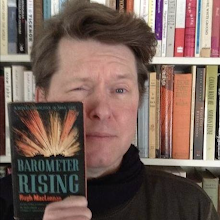
Maria Monk was born 195 years ago today in Dorchester, Lower Canada (now Saint-Jean-sur-Richelieu, Quebec). The "Awful Disclosures" published under her name were just one awful part of an awful life that ended tragically in a New York City prison thirty-two years later. Neither the date of her death, nor her place of burial were recorded, but this didn't stop poet
John J. MacDonald (a/k/a James MacRae) from putting poison pen to paper. From his self-published
Poems of J. J. MacDonald, a Native of County Glengarry (
c. 1877):
EPITAPH FOR MARIA MONK
Whoever ye are by this tomb that shall go,
Beware lest ye tread on the filth that’s below,
For under this monument lowly are laid
The mortal remains of a comical jade.
Ye swine that by accident hither come round,
Refrain from disturbing or turning the ground,
Or else you will die from inhaling the air;
Ye feathering songsters, be cautious, take care.
The only exception 'tis proper to make:
That Methodist preachers full freedom may take,
For they loved and accompanied her while she lived,
And from them she special attention received.
In actuality, it wasn't "Methodist preachers", but Presbyterian clergymen who used poor Maria in creating the hoax. There is a difference.

An early, hand-tinted photograph of St Marys, Ontario showing MacDonald's church, Holy Name of Mary (right) and one of the town's two Presbyterian churches (left).
Related posts:












